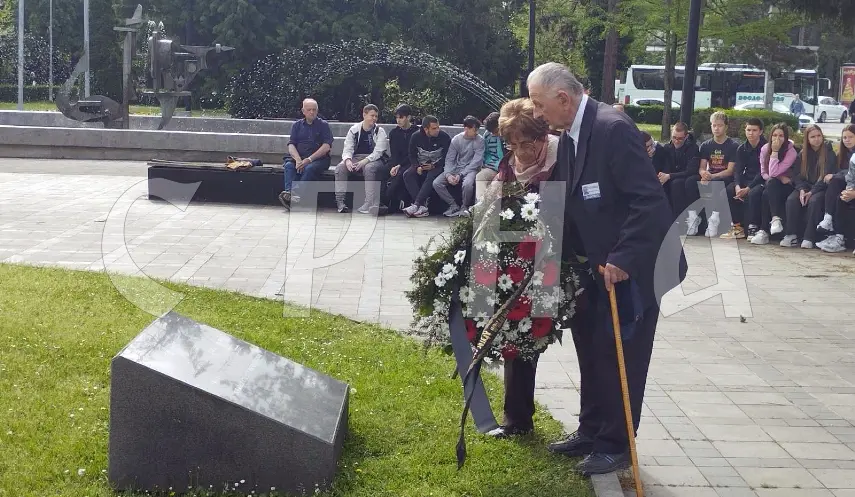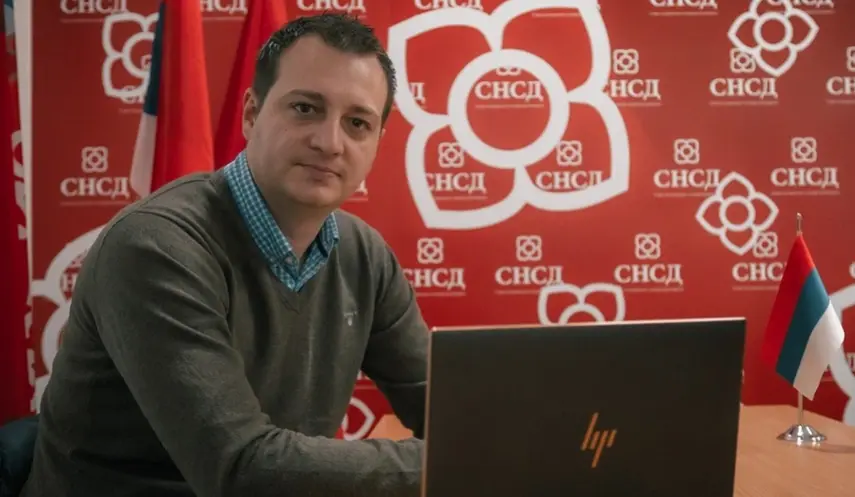REMEMBERING THOSE KILLED BY USTASHA IN JASENOVAC CAMP DAILY
Republika Srpska - Banja Luka - Jasenovac - historical events
04/23/2025
11:47

BANJA LUKA, APRIL 23 /SRNA/ - The victims killed in the Ustasha-run Jasenovac camp and the torture they were subjected to before their death should be remembered daily in order to avoid such evil being repeated, it was pointed out at the commemorative meeting in Banja Luka on the occasion of the 80th anniversary of the breakout of the Jasenovac camp inmates.
Jasenovac camp survivor Mile Vukmirović /91/ told the press that more than 20 members of his immediate family were killed in the Jasenovac camp, pointing out that now only one of Vukmirović's eight houses remains.
Through tears, Vukmirović testifies about the severe traumas he survived in Jasenovac, which he can never forget as long as he lives.
Dragoslav Ilić, a member of the Banja Luka Association of the Second World War camp inmates and their descendants, said that the Jasenovac camp is a symbol of the total suffering of the Serb people in the Independent State of Croatia /NDH/ and that the crimes committed are a collective trauma for the people.
Ilić, who is also a historian at the Republic Research Centre of War, War Crimes and Tracing Missing Persons, stated that estimates of the total number of victims in the NDH range from 600,000 to 800,000 people, pointing out that so far there are 455,000 registered victims, around 20,000 children by name, while the working material contains more than 70,000 victims.
The Head of the Union of Republika Srpska Prison Camp inmates Anđelko Nosović said that the suffering of the Serb people has been continuously happening since the Doboj camp in the Great War, the Jasenovac camp in World War II, and in the Defensive-Patriotic War.
"For more than a century, there has been a continuous crime against the Serb people, unfortunately by the same people, neighbours, under the leadership of those who dictate the current suffering of the Serb people in both Republika Srpska and Serbia," Nosović pointed out.
Danica Levajac said that her mother and her entire family were imprisoned in Jasenovac and survived it; her husband, a former professor at the Banja Luka Grammar School, wrote a story that is traveling around the world about the murdered children in the Šargovac settlement in Banja Luka during World War II, which was "under the rug" for 70 years.
She pointed out that the culture of remembrance of those killed in the Ustasha camp in Jasenovac should be nurtured daily in order to avoid such evil being forgotten or repeated.
Wreaths were laid at the Poplar of Horror memorial on the plateau outside the Republika Srpska National Assembly by members of the City Association of World War II prisoners and their descendants, representatives of the Jewish Municipality of Banja Luka, the city of Banja Luka, and the Association of Republika Srpska Prison Camp Inmates.
The commemorative gathering, which was attended by students of the Nikola Tesla Electrical Engineering High School and the Banja Luka Grammar School, was organized by the Banja Luka Association of World War II prisoners and their descendants.
In Donja Gradina, on April 27, a tribute will be paid to all innocent victims of World War II in the NDH, it was said at the session of the Coordination Committee marking the 80th anniversary of the breakthrough of the last Jasenovac camp inmates.
The inmates of the infamous Jasenovac camp, 1,073 of them, broke out on April 22, 1945. 169 inmates survived the last days of the concentration camp system in Jasenovac.
According to the data of the Donja Gradin Memorial Zone, 700,000 victims were killed in the infamous Jasenovac Ustasha camp during World War II, including 500,000 Serbs, 40,000 Roma, 33,000 Jews, and 127,000 anti-fascists. 20,000 children died in Jasenovac.
The NDH death camp system included about 80 camps, and Donja Gradina was the largest execution site of the Jasenovac concentration camp system.

DODIK WISHED HERZOG AND NETANYAHU HAPPY INDEPENDENCE DAY OF ISRAEL

MRKAJIĆ: OPPOSITION IN SRPSKA IS THE DARKEST STAIN IN HISTORY OF SERBIAN PEOPLE

DODIK: THERE IS A POSSIBILITY OF ADDRESSING PERMANENT COURT OF ARBITRATION IN THE HAGUE


